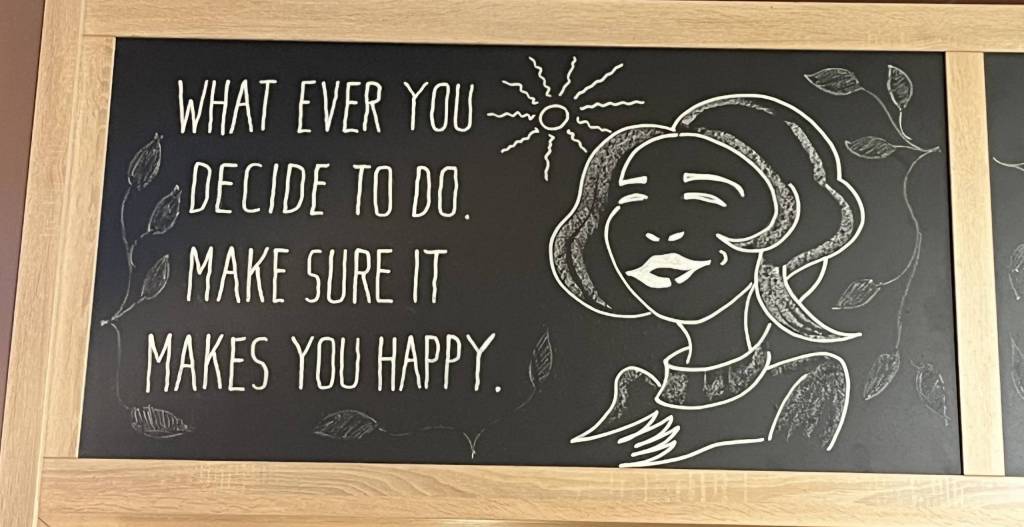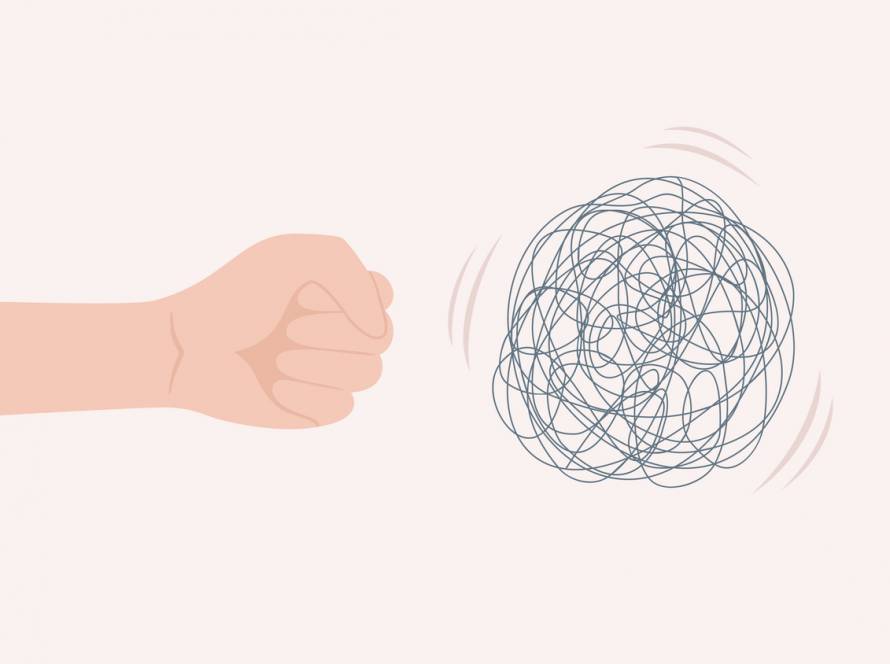Introduction
Pursuing a state of happy is one of the most dominant purposes of our time. It can be hard to not be bombarded in daily life with messages demanding happy needs to be your goal. I took the photo below in a café a few days ago. If I spent a week monitoring, I bet I’d find several examples of where I encountered this kind of encouragement. They are usually prevalent via book covers, posters, email newsletters, newspapers, social media and more.

Being endlessly fed the line that everything in life will be great when you are pursuing happy is often unhelpful. This is particularly the case when you are feeling mentally low, struggling with anxiety or have low self-worth. It can be just another thing that feels out of reach to strive for.
Why pursing happiness is a trap and defining happy
In his book, ‘The Happiness Trap’1, Russ Harris describes the endless pursuit of happiness as a ‘powerful psychological trap’. Because there is so much pedalled about the benefits of being happy, he argues that the actual reality of the trap is hidden. Health statistics show an increasing number of people suffering with mental health issues indicating how pursuing happy is not gaining traction.
The definition of happy according to Oxford Languages2 is ‘feeling or sharing pleasure or contentment’ and ‘having a sense of trust and confidence in (a person, arrangement or situation)’. Nothing about this definition implies that happy is a permanent state. Feeling and sense fluctuate all the time. But there can be value in considering these two parts of the definition together.
A brighter mental state
Often when I’ve been working with a client for a little while, they’ll arrive for our session in a buoyant manner because they’ve had a week where they have felt their mood has lifted and there’s been a definite shift towards contentment. This may be the first time in a long time where they’ve felt a glimmer of happy.
Particularly, if a client has had difficulties for a while, this happy state can feel like coming out of a tunnel or that there is a break in the clouds and suddenly some blue sky. This can not only lift their mood but make them feel calmer. We will celebrate the shift because it is usually due to the effort the client has invested in themselves. Work such as reflecting on what sits behind their thoughts and feelings and changes to their behaviours or environment.
Once this initial shift occurs, there can be a sense for the client of ‘I’ve cracked it!’ or ‘I can’t quite believe it!’. There may also be the idea that this could be their new normal which can be motivating. But the reality is these happy weeks can be quickly be followed by weeks when the client doesn’t feel so good again. This can make them feel demoralised.
The reality of shifting moods and contributing factors
The change in mood can, of course, arrive for a myriad of reasons. Challenges at work or home, feeling physically unwell, not having time to themselves, changes in hormones, a busy social calendar, less focus on nutrition and exercise etc. All of which, of course, are the pattern of modern life. No two weeks are ever really quite the same, no matter how much you might think so. And as a result, the shape of your mood is not uniform either, for there is always something different happening to yourself physically, mentally or in the environment in which you exist.
So, when a client encounters what they perceive to be a negative change in their mood after happier weeks, we reflect on the reality of the situation and what has occurred in the interim. We also discuss the normality of shifting emotions. Where we focus our attention is on their baseline. The baseline of their mood is where sustained shifts can occur. And by baseline, I mean the level of their lowest mood or most anxious state.
Sustained change creates upward shifts in baseline mood
Through personal development with the support of counselling and tangible changes to how you think and behave, baselines can increase. The knock-on effect is the gap between the happy highs experienced and the lows of challenging emotions reduces. Overtime my clients’ baseline can move in an upward trajectory. Building trust and confidence in their ability to manage their mental wellbeing helps maintain a more balanced mood pattern. It means whilst bad days happen or life events are challenging, there is more resistant to being derailed by them. There is a better understanding that feeling pleasure and contentment is not a permanent state to strive for. Without the pressure of pursuing happy, life can become lighter.
The timeline for changing your mood baseline depends individual circumstances, mindset and experiences. Sustained change is often slow and steady but sometimes a profound realisation can lead to a more dramatic upwards shift. As the process unfolds my clients typically come to realise that when they have weeks when not feeling great, their mood is not as low as it was before. It becomes easier to shift their mood because they have develop greater understanding of themselves and what helps change how they feel. Typically we will have worked on recognising what ‘tools’ e.g. activities, conversations etc support them to shift their mood when tough days occur.
Conclusion
Developing a sense of trust and confidence in your ability to deal with life can be more helpful than simply pursuing happy. By knowing that the mood of life is always shifting, gaining a better understanding of what gives you contentment and pleasure and developing your ability to deal with your environment, you can embody the definition of happy in your own way.
If you would like support to help shift your mood baseline, my services include telephone, online and face-to-face counselling.
1 Harris, R. (2008). The happiness trap. Robinson Publishing.
2 Oxford Languages (2025). Retrieved from https://languages.oup.com/google-dictionary-en/ [Accessed 10/09/2025]





